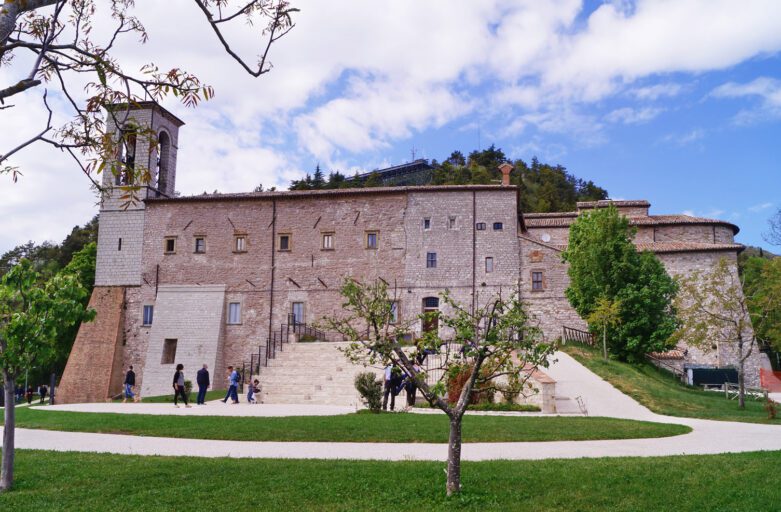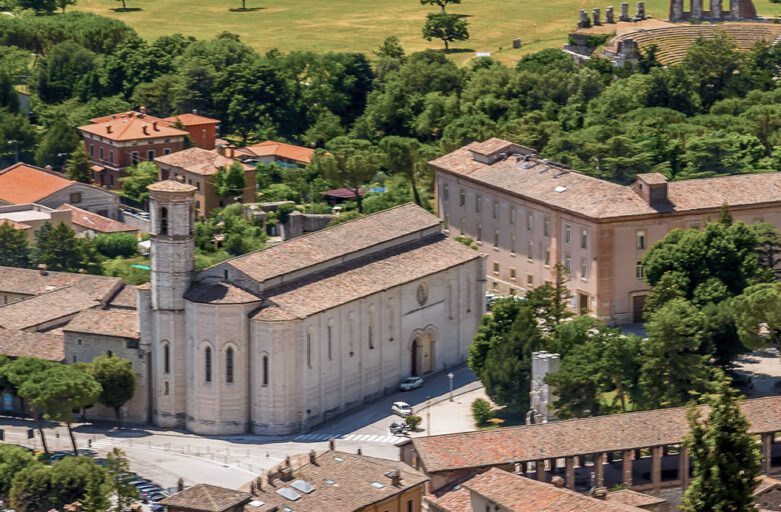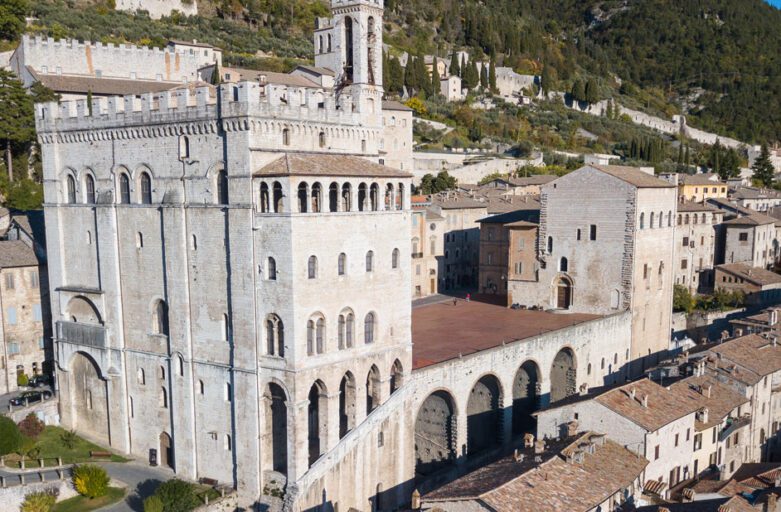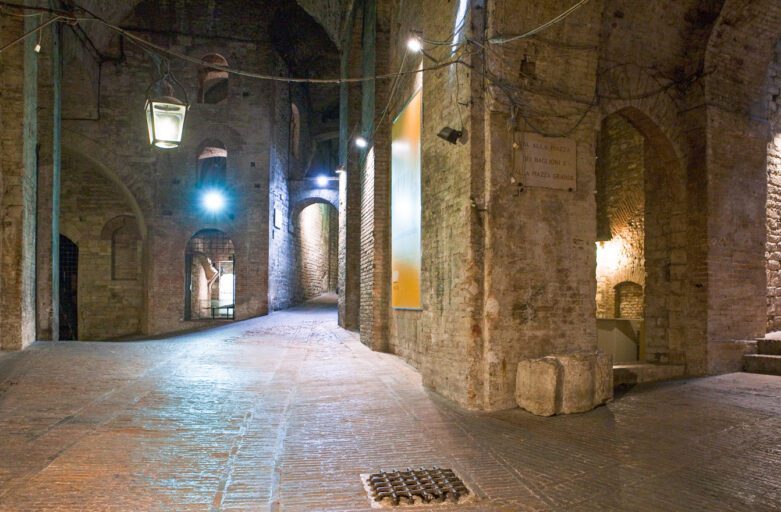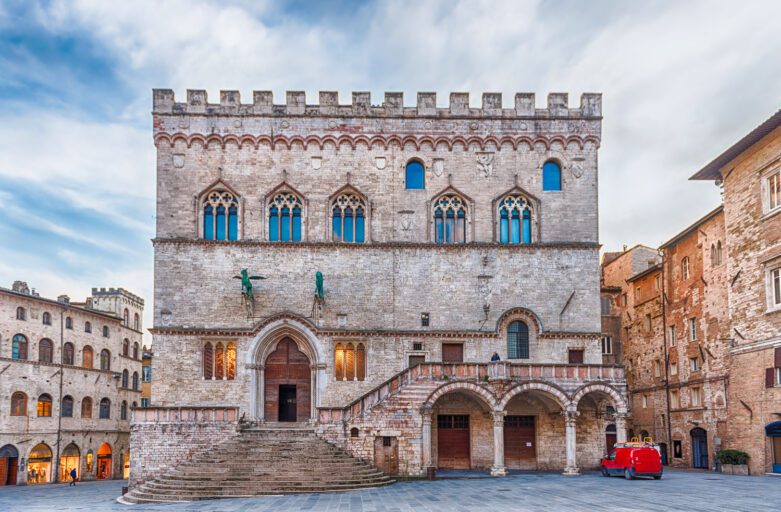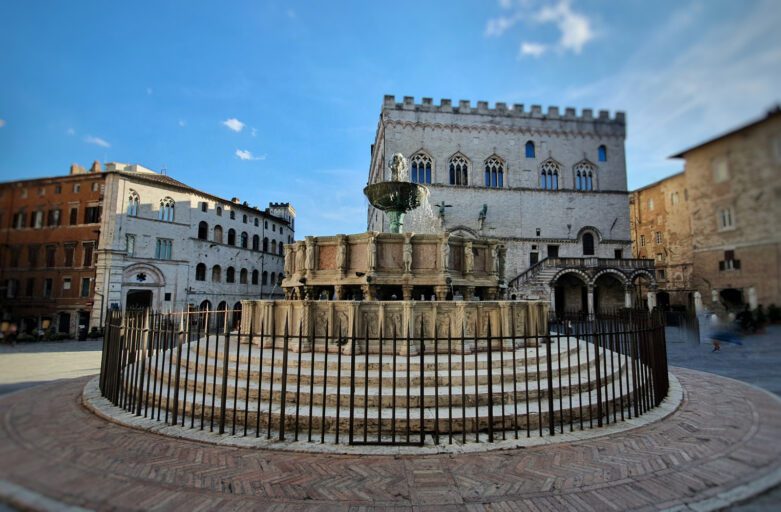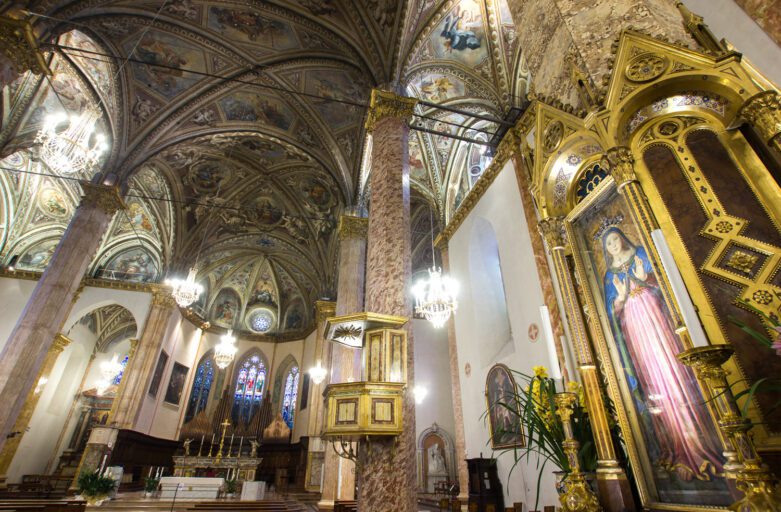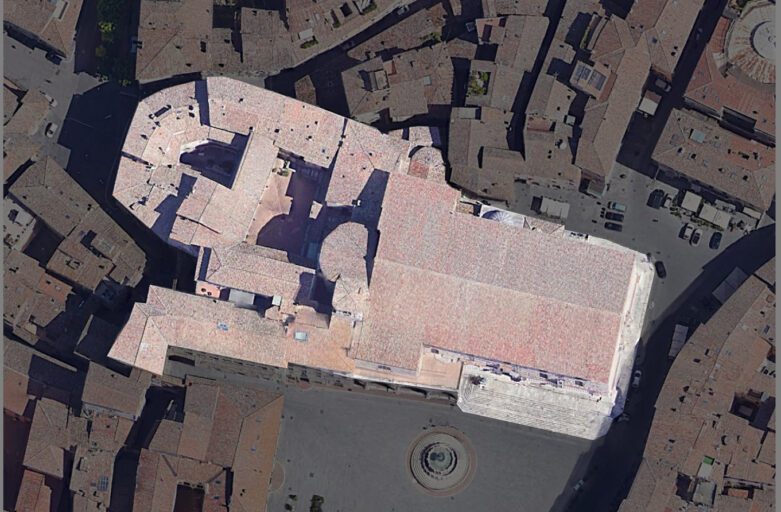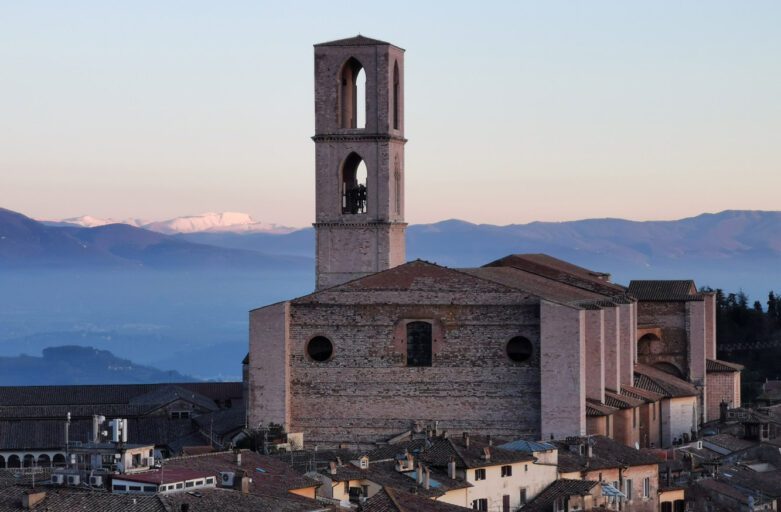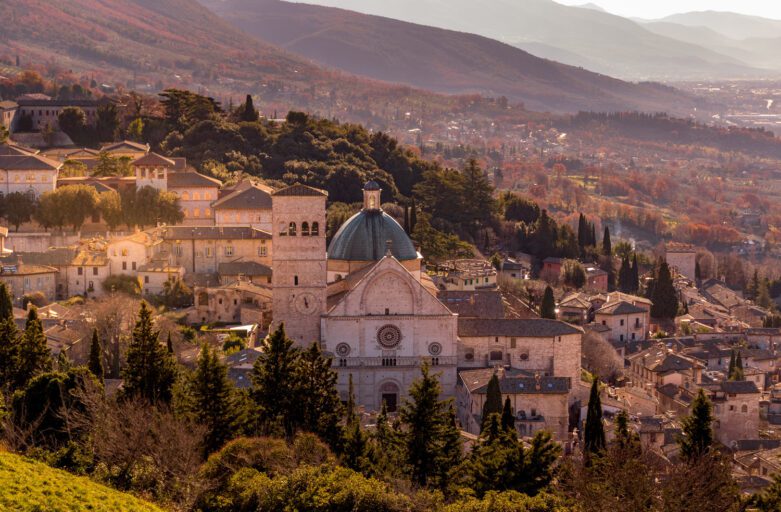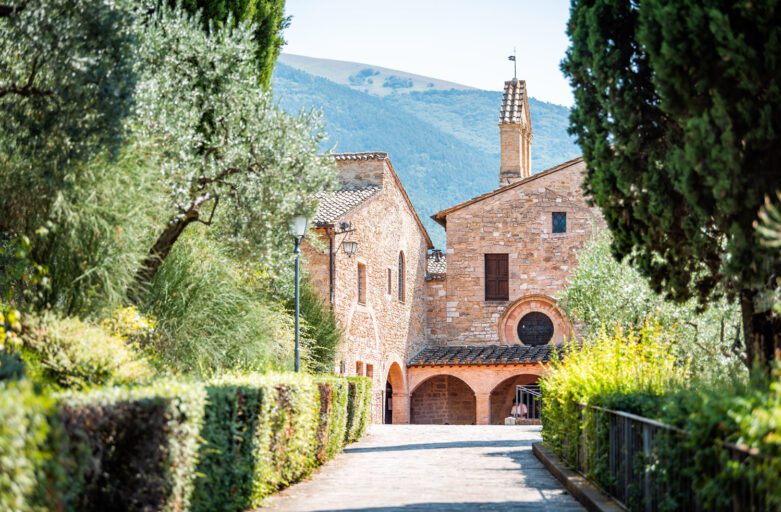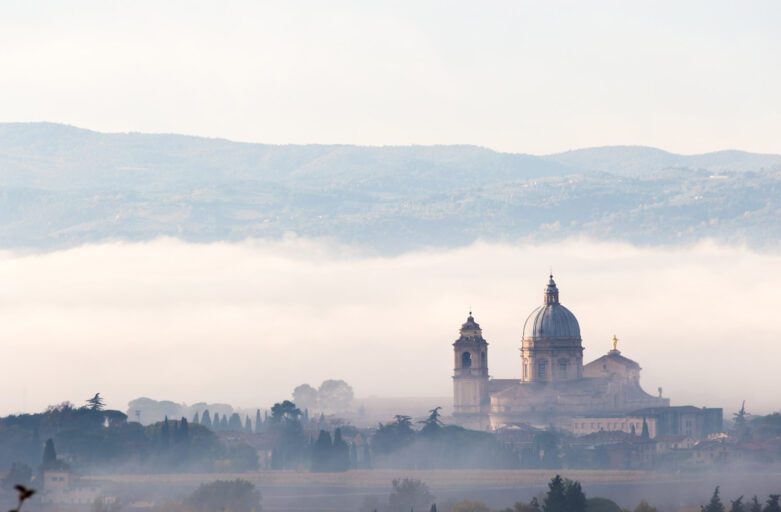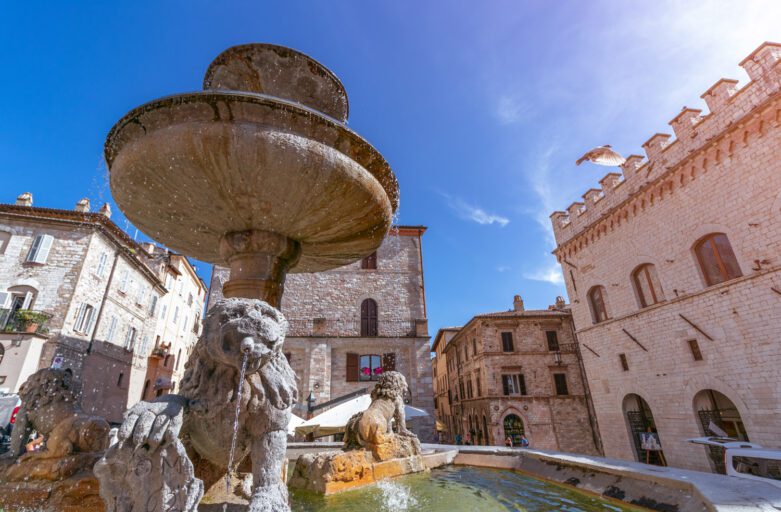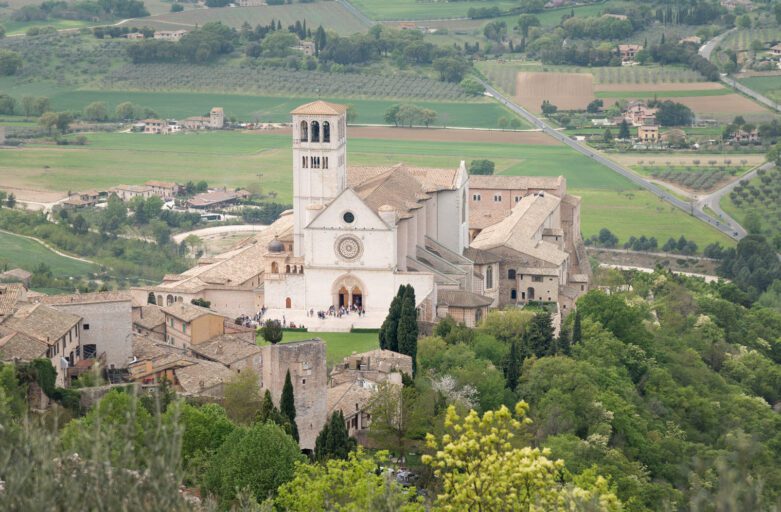The Poorest Kind of Bread One product that has so many varieties as to mirror, in one way or another, the richness of Italy in
Tag: Tradition
Saint Ubaldo’s Basilica – Gubbio
A Brief Biography
The personage of young Ubaldo – who was officially declared a saint on March 5, 1192 – cannot be divided from Gubbio and the great love the town’s inhabitants still have for him. More than eight centuries later, in fact, its unique memory has not faded away: a sign of gratitude toward the Patron Saint for having been an inspirer of peace and reconciliation
Saint Francis’ Church in Gubbio
Francis, the Man; and Gubbio
The story of Gubbio and Francis of Assisi means the discovery of an intense relationship, interwoven with travels, friendship, and feelings. Francis’ father, Bernardone (“Big Bernard”), had frequent trades with Gubbio, often taken care of by Francis himself, who therefore happened more than once to get there for business. In Gubbio the wealthy Spada familiy, a.k.a. Spadalonga (respectively = sword, and long sword), active in the field of wool and fabrics, also “provided” Francis with the friendship of their young sons, with whom he would spend his days over there. One of them was among his comrades in arms in the 1202 war between Assisi and Perugia.
Piazza Grande (The Main Square)
A Decentralized Center
Gubbio rises at the foot of Mount Ingino with a strong self-consciousness. Framed within a luxuriant Nature, rich in woods and trails, it is considered one of the most beautiful Medieval towns in Italy. A major feature of the old town center are the buildings in calcareous stone, that gives them a typically gray color. Stones that still envelope the secrets of past masters and masterpieces while filling one’s eyes and soul with awe and wonder.
The Rocca Paolina – Perugia
The Intriguing Story of a Fortress
In Perugia’s old town center, at the southern end of Corso Vannucci (Main Street) there is an area with flowerbeds, benches, and fountains, where the Palace of Perugia’s Province and the equestrian monument to the first king of united Italy, Vittorio Emanuele II (1820-1878), also rise. This is where a group of buildings existed, called Rocca Paolina: a fortress built by decision of Pope Paul III in the mid-16th century.
The Palace of Priors
A Town Symbol
The Palace of Priors is undoubtedly one of the most important buildings in Perugia, beside being a masterpiece in Gothic style. Its structure develops partly along Main Street (Corso Vannucci) in the old town center, and has its acme in the façade facing the main square, Piazza IV Novembre.
The square, one of the most beautiful in Italy, is marked by the strong polar opposition between the civil side of the town, precisely the Palace of Priors, and the religious side, i.e. the buildings in the so-called Saint Lawrence “Island,” in a Medieval atmosphere enlivened by the water springing from the Great Fountain.
A Fountain for an Aqueduct
The Fontana Maggiore, a gem of Gothic sculpture
The Fontana Maggiore (Great Fountain) is the sculptural symbol of Perugia. It was built in 1278 to celebrate the completion of a long aqueduct that, by taking cleverly advantage of the principle of communicating vessels, could even conduct water uphill on Perugia’s hills. The fountain, surely among the oldest and most beautiful in Italy, is in fact considered a masterpiece of Gothic sculpture.
The Cathedral of Saint Lawrence
A Cathedral to Welcome Them All
The current Cathedral of Saint Lawrence replaced an older church, a Romanesque church, that therefore must have been built in the 12th century. In March 1300, the Communal authorities in a plenary session – after ascertaining that the size of the Romanesque cathedral did no longer fit the needs of Perugia, then in a phase of expansion – decided to start a new building from zero: a bigger one, and in the same place as the older. The architect chosen for this new, important public enterprise was Fra (Brother) Bevignate, a Benedictine monk of the Order of Saint Sylvester. He was also entrusted with some of the most meaningful monuments of Medieval Umbria, such as the Great Fountain and the aqueduct in Perugia, and the Orvieto Cathedral
The Saint Lawrence “Island” – Perugia
The Saint Lawrence “Island”: the ancient district, heart of Perugia since Etruscans. It includes Perugia Underground, the Chapter Museum and the Cathedral.
The Old Town Center – Perugia
Perugia, the Old Town center: past to present along Corso Vannucci and the alleys of this beautiful town center with a Medieval charm.
The Cathedral of Saint Rufinus in Assisi
Assisi’s Cathedral: info and story of Saint Rufinus and his church, from the Romanic facade to the “tug of war” conflict.
Saint Damian
In the Assisi plain and among the olive trees of the countryside, there is a place much beloved with reference to the Franciscan origins: the Shrine of Saint Damian. Here silence and peace reign, wonderfully framing the view on Nature all around. We actually know little about the origin of this structure, possibly built among the seventh and ninth centuries; and little, too, about the reasons why the church was dedicated to Saint Damian, a medical doctor and martyr whose relics had been taken to Rome in the mid-fifth century. We can anyway say for sure that the history of this very small church, then kept by an old priest, started to be in the limelight in 1205, when one day a 24-year-older called Francis stopped here to pray
The Porziuncola and Saint Mary of the Angels
Saint Francis of Assisi and the Porziuncola
The expanses below Assisi are among the most fascinating in Italy thanks to their colors and the view they afford on the town, which follows the contours of Mount Subasio in its white and rose stones. Precisely in this plain did blossom the life flowers of Saint Francis and Saint Clare. The young man, after restoring the Church of Saint Damian, “moved to the place called Porziuncola, where an old church existed, dedicated to the Blessed Virgin, Mother of God, now abandoned and forgotten. Seeing it in such a poor state, and also because he had great devotion toward the Mother of all goodness, the Saint made it his own home, and would finish to repair it in the third year after his conversion.” This is how Thomas of Celano, Francis’ first biographer, reports the Saint’s coming to this “small portion of land” (that is the meaning of Porziuncola) in the plain.
Right around that abandoned little church, possibly built in the fourth century and now given the Saint by the Benedictine monks, the first Franciscan company was founded, a bunch of enthusiastic friends. According to G. K. Chesterton, this became “the home of many homeless men.”
Town Hall Square
The Main Square in Assisi
Piazza del Comune (the town hall square) has always been the hub of social and cultural life in Assisi. Not by chance do all the main streets from the town gates meet here.
Built upon a Roman forum, in the Middle Ages it became the place for the people’s gatherings. Therefore, here rise the most important buildings of town life: the Temple of Minerva, also used as the oldest Town Hall in Assisi (later transferred to Palazzo dei Priori, the palace of Medieval “priors”); the palace of the Capitano del popolo (the “common people’s” – actually, the middle class’ – political spokesman), and the People’s Tower.
The Basilica of Saint Francis
Saint Francis’ Legacy
When in 1226 Saint Francis of Assisi died at the age of 44, he was already very famous, and his movement – a true religious Order since 1223 – was followed by thousands of people. They immediately felt they had to build a basilica that may keep his remains, show his importance for all the faithful of that era, and preserve his memory. So, on July 15, 1228, Papa Gregorio IX – who had personally been a friend of Francis – declared him a Saint, and at the same time laid the first stone of the basilica on the hill just off the city of Assisi, northward. No more than seven years later, in 1235, the building made of two superimposed churches and a big belfry had already been completed, basically as we still see them nowadays. The Basilica of Saint Francis is undoubtedly one of the most famous and most frequently visited churches all over the world. It unites, in fact, a deep religious significance in connection with Saint Francis, and an exceptional value in itself, both historical and artistic.
